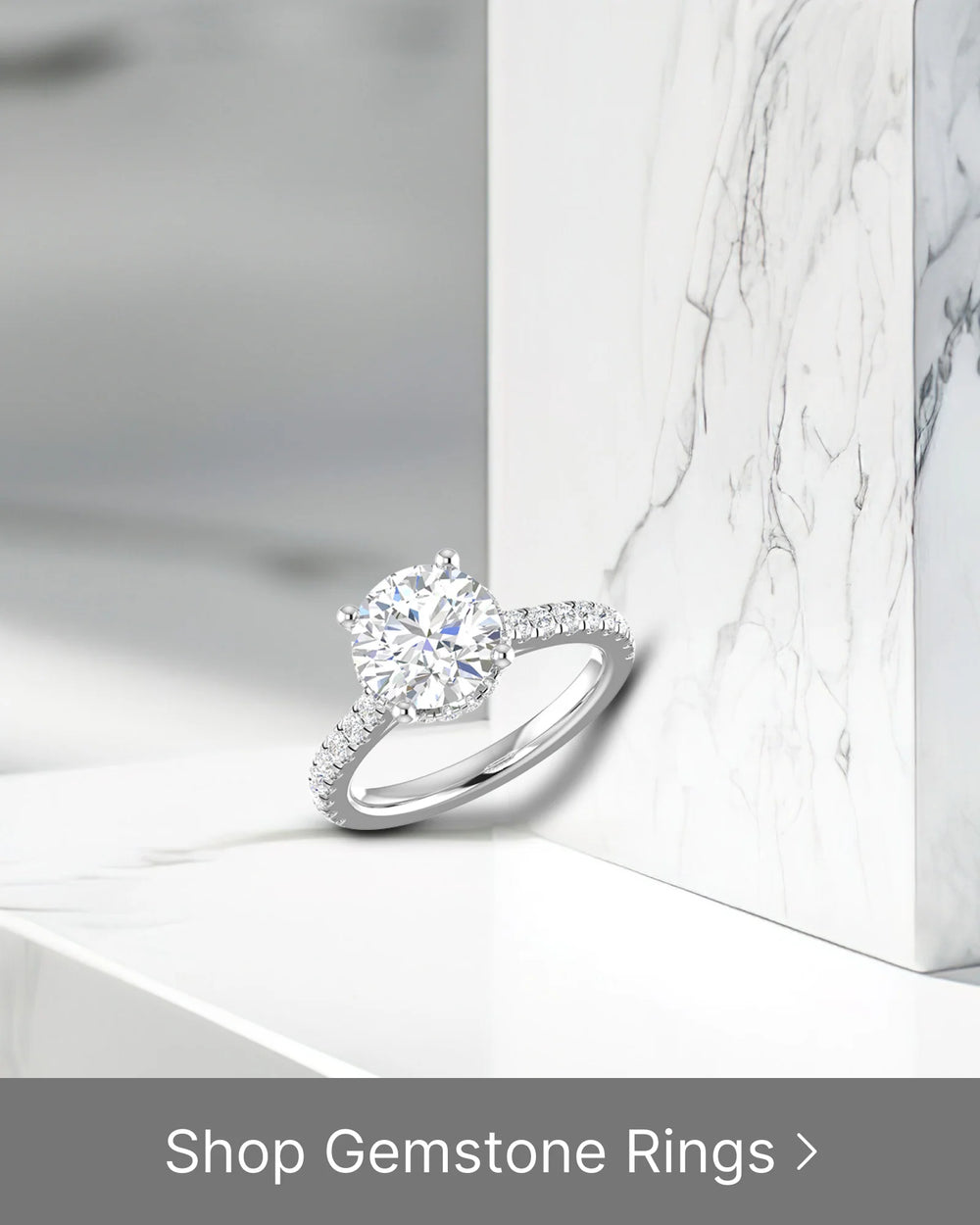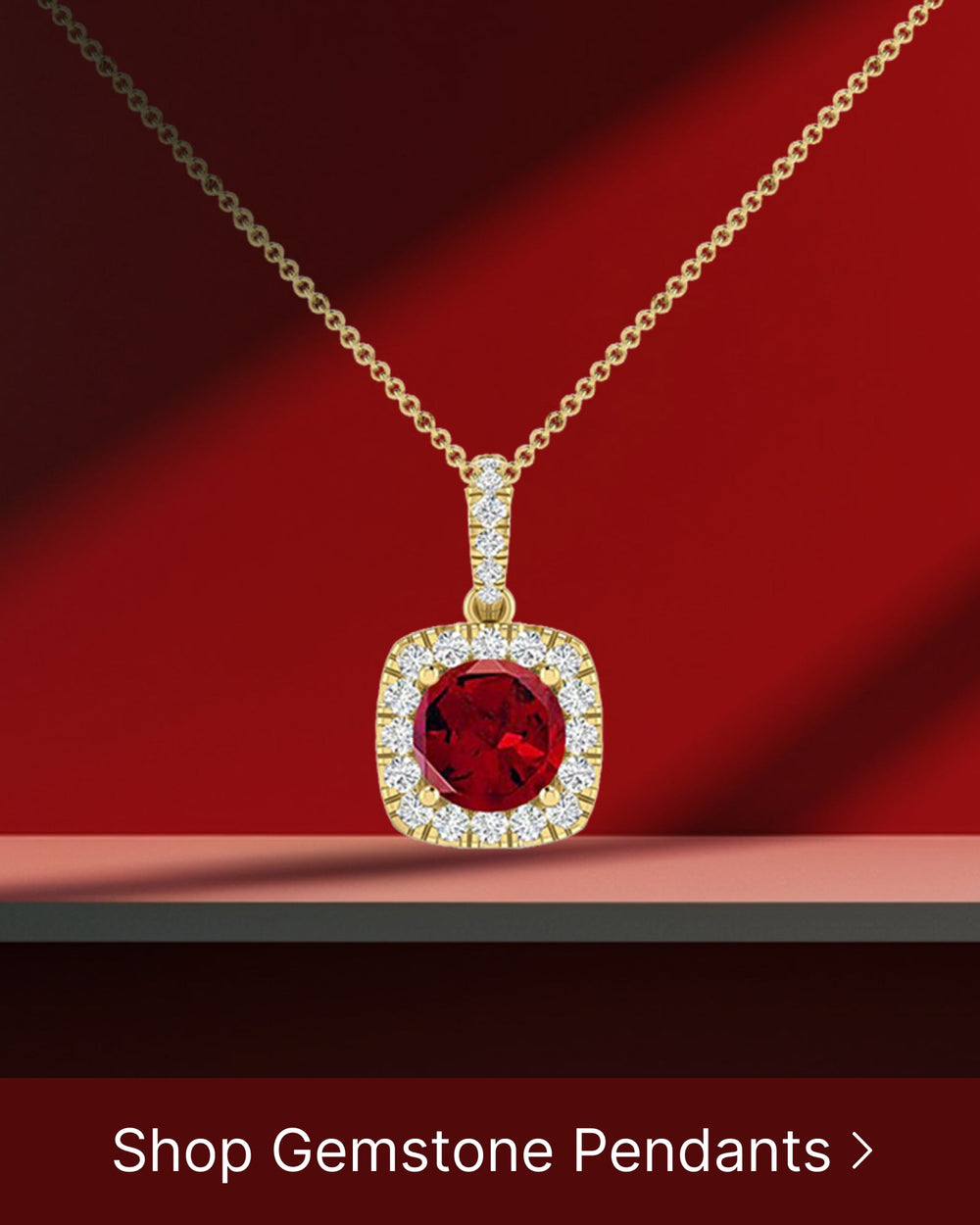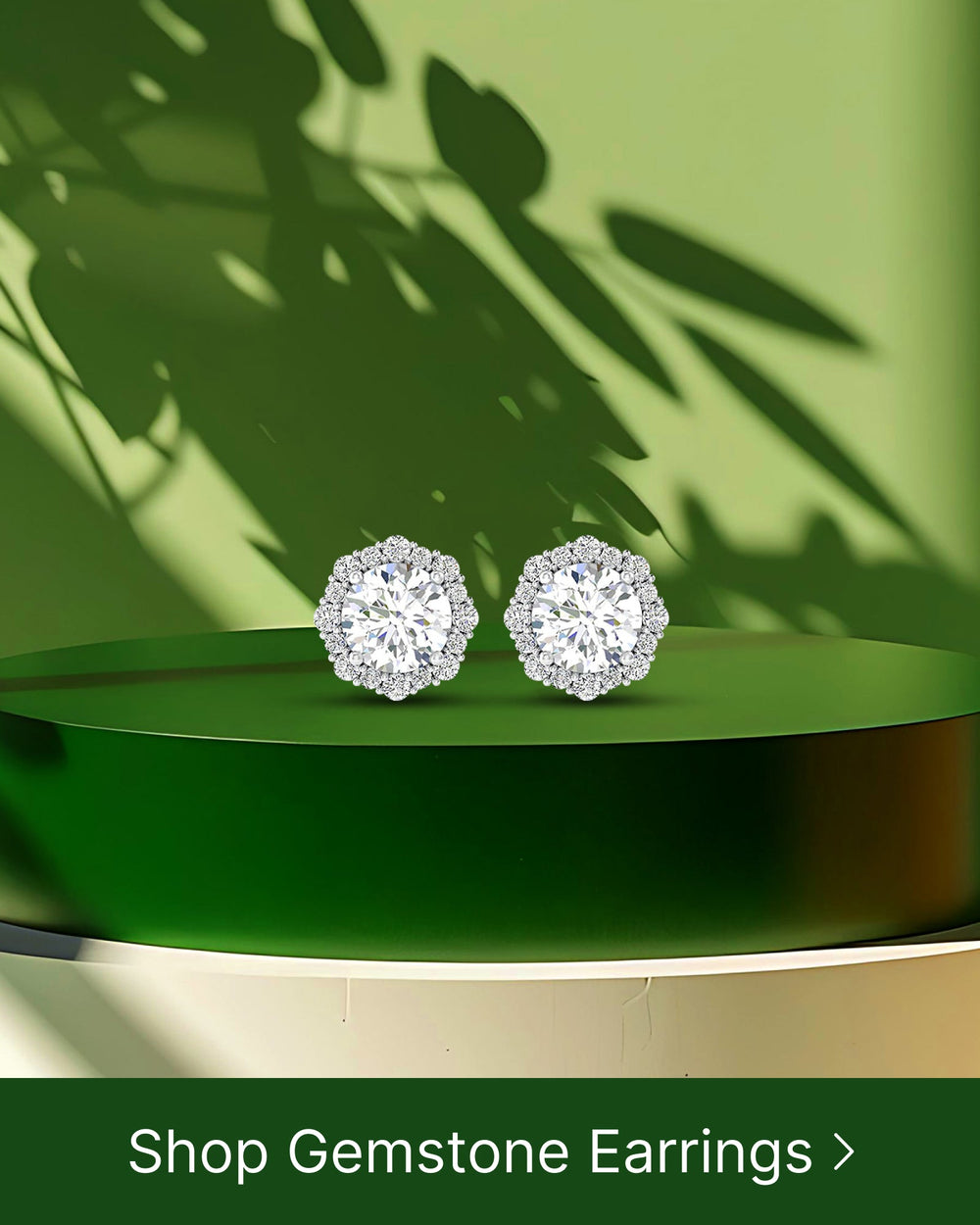Diamonds have long been the go-to choice for engagement rings and other special occasions, but in recent years, more and more individuals are seeking out alternatives. Whether it's due to the rising cost of diamonds or concerns about the ethical issues surrounding diamond mining, there are several options to consider. In this article, we will explore some popular diamond alternatives, including moissanite, white sapphire, and other noteworthy options. We will delve into their unique qualities and help you make an informed decision when choosing the right diamond alternative for you.
Understanding the Need for Diamond Alternatives
In recent years, the cost of diamonds has reached staggering heights, making them increasingly unaffordable for many people. Additionally, the ethical concerns surrounding diamond mining, such as child labor and environmental damage, have prompted consumers to seek out more sustainable options. This has led to a surge in popularity for diamond alternatives that offer similar beauty and durability but without the hefty price tag or moral complications.
The Rising Cost of Diamonds
Diamonds have always been associated with luxury and prestige, but their scarcity and controlled supply have driven up their prices over the years. As demand continues to rise and diamond mines become increasingly depleted, the cost of diamonds has soared beyond the reach of many consumers. This has paved the way for alternative gemstones that offer comparable aesthetics at a fraction of the cost.
One such alternative is moissanite, a gemstone that closely resembles a diamond in terms of brilliance and durability. Moissanite is created in a laboratory, allowing for a controlled supply and a more affordable price point. It is also an environmentally friendly option, as it does not require mining and has a minimal impact on the environment.
Another popular diamond alternative is cubic zirconia, which is known for its affordability and diamond-like appearance. While cubic zirconia may not have the same level of durability as a diamond, it offers a budget-friendly option for those who desire the look of a diamond without the high price tag.
Ethical Concerns with Diamond Mining
One of the major factors contributing to the appeal of diamond alternatives is the ethical issues surrounding diamond mining. The extraction of diamonds has been linked to environmental degradation and human rights abuses. Many consumers are now opting for alternatives that are sourced ethically and have a minimal impact on the environment.
Lab-grown diamonds have emerged as a popular choice for those seeking an ethical alternative to mined diamonds. These diamonds are created in a laboratory using advanced technology that replicates the natural diamond-growing process. Lab-grown diamonds are chemically and physically identical to mined diamonds, but they are produced without the negative environmental and social impacts associated with mining.
Another ethical alternative to mined diamonds is recycled diamonds. These diamonds are sourced from previously owned jewelry and repurposed for new pieces. By choosing recycled diamonds, consumers can enjoy the beauty of a diamond while reducing the demand for new mining operations.
Furthermore, alternative gemstones such as sapphires, emeralds, and rubies have gained popularity as ethical options. These gemstones are often sourced from mines that adhere to strict labor and environmental standards, ensuring that they are free from the ethical concerns associated with diamond mining.
As consumers become more conscious of the impact of their purchasing decisions, the demand for diamond alternatives continues to grow. Whether driven by affordability, ethical concerns, or a desire for unique and distinctive jewelry, these alternatives offer a compelling choice for those seeking a more sustainable and responsible option.
Introduction to Moissanite
One of the most popular diamond alternatives is moissanite. Discovered in 1893 by French chemist Henri Moissan, moissanite is a rare and naturally occurring mineral. It is valued for its exceptional brilliance and fire, often surpassing that of diamonds.
Moissanite is not just any gemstone; it has a fascinating origin and composition that sets it apart from other precious stones. Composed of silicon carbide, moissanite is created through a complex process involving heat and pressure. This process mimics the conditions under which moissanite is formed in nature, deep within the Earth's crust. The result is a gemstone that is not only visually stunning but also incredibly durable.
The Origin and Composition of Moissanite
Moissanite's composition of silicon carbide gives it unique properties that make it highly desirable. Silicon carbide is a compound made up of silicon and carbon atoms arranged in a crystal lattice structure. This arrangement gives moissanite its exceptional hardness, ranking just below diamonds on the Mohs scale. With a hardness of 9.25 on a scale of 1 to 10, moissanite is incredibly resistant to scratches and chips, making it an excellent choice for jewelry that will be worn daily.
But what truly sets moissanite apart is its origin. While diamonds are formed deep within the Earth's mantle over billions of years, moissanite has a more extraterrestrial origin. It was first discovered in a meteorite crater in Arizona, where it was found in minute quantities. This cosmic connection adds to the allure of moissanite, making it a truly unique and captivating gemstone.
Comparing the Brilliance and Durability of Moissanite to Diamonds
While diamonds have long been revered for their brilliance, moissanite offers a stunning alternative that rivals the beauty of diamonds. In fact, moissanite has a higher refractive index than diamonds, meaning it reflects more light and sparkles with dazzling brilliance. This exceptional brilliance is further enhanced by moissanite's dispersion, which is even higher than that of diamonds. Dispersion refers to the ability of a gemstone to break light into its spectral colors, creating a mesmerizing display of fire.
Not only does moissanite shine bright, but it also stands the test of time. Its exceptional hardness and durability make it an excellent choice for jewelry that will be worn daily. Unlike other gemstones that may scratch or chip easily, moissanite is highly resistant to such damage. This durability ensures that your moissanite jewelry will retain its beauty and sparkle for years to come, making it a wise investment.
When it comes to choosing between moissanite and diamonds, it ultimately comes down to personal preference. While diamonds have long been the traditional choice for engagement rings and other fine jewelry, moissanite offers a more affordable and ethically sourced alternative that doesn't compromise on beauty or durability. Whether you choose the timeless elegance of diamonds or the captivating brilliance of moissanite, both gemstones have their own unique charm and will undoubtedly make a statement.
The Appeal of White Sapphire
Another diamond alternative gaining popularity is white sapphire. Known for its exceptional clarity and colorlessness, white sapphire bears a striking resemblance to diamonds but at a lower cost.
The Rarity and Value of White Sapphire
White sapphires, like their colored counterparts, are a variety of the mineral corundum. While sapphires are commonly associated with blue hues, white sapphires offer a colorless alternative that closely resembles diamonds. They are quite rare in their purest form, significantly adding to their value and desirability.
White sapphires are formed deep within the Earth's crust under intense heat and pressure. The process of their formation involves the crystallization of aluminum oxide, resulting in a gemstone that is both stunning and precious. Due to their rarity, white sapphires have become highly sought after by gemstone enthusiasts and collectors.
When it comes to evaluating the value of white sapphires, several factors come into play. The size, cut, and overall quality of the gemstone greatly influence its worth. Larger white sapphires with excellent clarity and precision cuts are considered more valuable, making them a coveted choice for those seeking a glamorous and affordable alternative to diamonds.
Evaluating the Clarity and Hardness of White Sapphire
White sapphires are renowned for their exceptional clarity, often boasting a level of transparency that rivals diamonds. Their pristine appearance and lack of visible inclusions make them highly desirable for jewelry making. When light passes through a white sapphire, it refracts and reflects, creating a dazzling sparkle that captivates the eye.
One of the key advantages of white sapphires is their remarkable hardness. On the Mohs scale, which measures a gemstone's resistance to scratching, white sapphires rank just below diamonds with a score of 9. This makes them highly durable and suitable for everyday wear. Whether set in an engagement ring or a pair of earrings, white sapphires can withstand the test of time, ensuring that your jewelry remains as beautiful as the day you first wore it.
White sapphires are also known for their versatility. Their colorless nature allows them to complement any outfit or style, making them a perfect choice for both casual and formal occasions. Whether you're attending a glamorous event or simply going about your daily routine, white sapphire jewelry adds a touch of elegance and sophistication to any ensemble.
In conclusion, white sapphires offer a captivating alternative to diamonds, combining exceptional clarity, durability, and affordability. Their rarity and value, along with their stunning appearance, make them an excellent choice for those seeking a timeless and luxurious gemstone.
Other Noteworthy Diamond Alternatives
While moissanite and white sapphire are popular choices, there are several other diamond alternatives worth considering.
The Unique Qualities of Cubic Zirconia
Cubic zirconia, often abbreviated as CZ, is a synthetic gemstone that closely resembles diamond. It possesses excellent clarity and an impressive sparkle that makes it an affordable substitute for diamonds.
The Beauty and Affordability of Rhinestones
Rhinestones, though not as durable as some other alternatives, offer a budget-friendly option for those looking to achieve a diamond-like appearance. Made from glass or crystal, rhinestones come in various sizes and shapes, making them versatile for a wide range of jewelry designs.
Choosing the Right Diamond Alternative for You
When selecting the perfect diamond alternative, there are several factors to consider to ensure you make the right choice.
Factors to Consider When Selecting a Diamond Alternative
First and foremost, consider your budget and the cost-effectiveness of each option. Think about the aesthetic qualities that matter most to you, such as brilliance, colorlessness, and durability.
The Impact of Your Choice on the Environment and Society
Finally, take into account the ethical and environmental implications of your decision. Choosing a diamond alternative that is responsibly sourced and has a smaller ecological footprint can contribute to a more sustainable future.
Ultimately, the decision to opt for a diamond alternative is a personal one. By exploring options like moissanite, white sapphire, or other noteworthy alternatives, you can find a gemstone that aligns with your values, satisfies your aesthetic preferences, and offers lasting beauty without breaking the bank.






